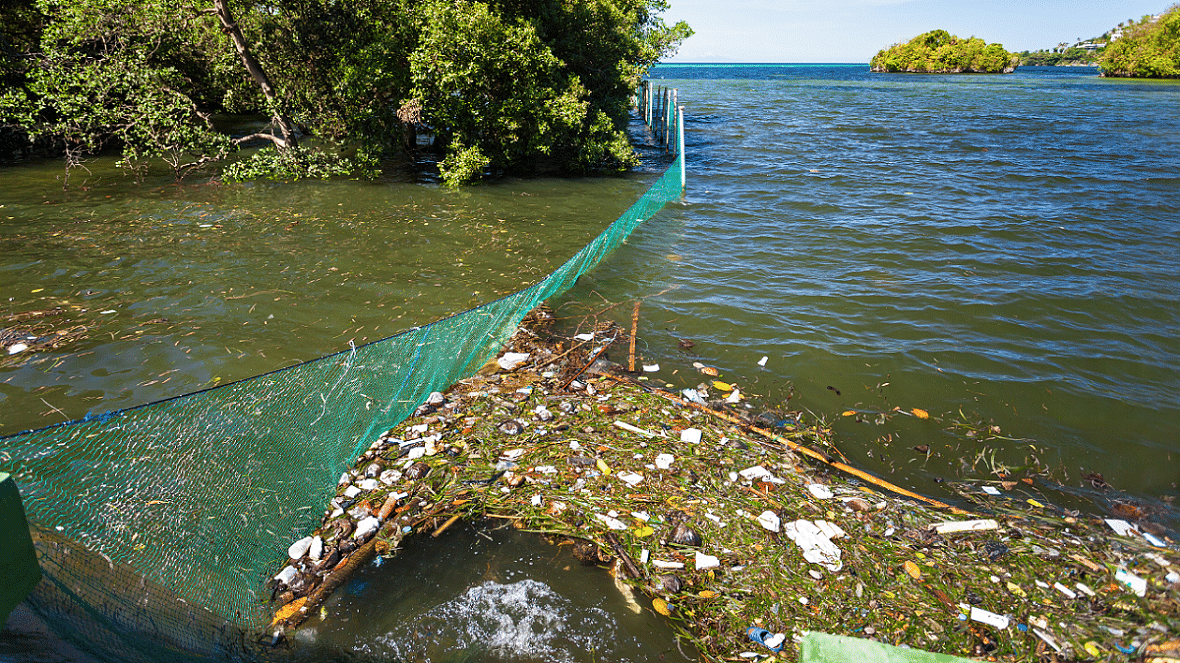
Microplastics in Cauvery water may be causing heart damage and skeletal deformities in fish, scientists at the Indian Institute of Science, Bengaluru reported on Monday, flagging fresh concerns on the quality of water flowing in Karnataka’s prime river.
Analysing samples collected from three stations near the KRS dam, the researchers detected microplastics – minute pieces of plastic often invisible to the naked eye – and toxic chemicals in those sites where the water is either stagnant or slow-moving.
When embryos of zebrafish were released in water samples, the scientists found that those exposed to water collected from polluting slow-flowing and stagnant sites experienced skeletal deformities, DNA damage, early cell death, heart damage, and increased mortality.
"There is no immediate risk to humans as the concentration of microplastics is low. But we don’t know its pathophysiology yet. If they are not metabolised, their accumulation in the body can be harmful,” team leader Upendra Nongthomba, professor at the department of molecular reproduction, development and genetics at IISc told DH.
Though microplastic has emerged as one of the most significant pollutants in the aquatic environments, there has been no study on such contaminants in Cauvery waters.
Nongthomba, a regular visitor to the KRS sites, noticed deformities in Rohu, Tilapia and snakehead fish and decided to check if such deformities are caused by any pollutant.
“Over the years, I have cherished going to the backwaters of the Krishna Raja Sagara Dam and having fried fish on the Cauvery river bank. But in recent times, I noticed physical deformities in some of them,” he said.
His team collected samples from three KRS stations where Cauvery water is flowing fast, at a moderately slow speed and remains stagnant.
The samples were collected between 1991 and 2021 before the monsoon to avoid any surge in the contamination level due to monsoon discharge.
All but one of the parameters were within the prescribed limits. The exception was dissolved oxygen, whose levels were much lower in samples collected from slow-flowing and stagnant sites.
Water from these sites also had microbes such as Cyclops, Daphnia, Spirogyra, Spirochaeta and E. coli, all known bio-indicators of water contamination.
Using Raman spectroscopy, the team comprising Abass Toba Anifowoshe, Debasish Roy Somit Dutta and Nongthomba detected microplastics and toxic chemicals in the water.
“For the first time, our study demonstrates the pollution effects of Cauvery river water, at two KRS sampling sites, where the water flows slowly or stagnant. Both samples induced cytotoxicity and genotoxicity in zebrafish due to reduced DO (dissolved oxygen) and excess amounts of biological oxygen demand/chemical oxygen demand,” they report. All indicate low levels of oxygen at both locations.
Oxygen deficient water along with microplastic and other chemical contaminants might be the reason behind the skeletal deformities and heart damage in fishes, the researchers said, noting further research would be needed to understand how microplastics were absorbed from the gut and which organs would be the most susceptible.
"Over the last 20 years, there has been a drastic decline in the number of fish species in Cauvery river and the quantity of the fish captured. Microplastic could be a plausible reason because the embryos are more susceptible. But we need more research,” he said.
Watch the latest DH Videos here:
